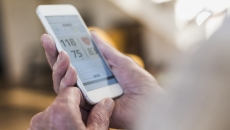JMIR
Researchers found physicians who provided more care through telemedicine also increased their time spent on after-hours EHR-based clinical and administrative work.
Researchers found three themes in their review of studies on wearables: the role of providers and potential benefits to care, driving behavior change and barriers to use.
Of the 224 companies analyzed, 98 received a clinical robustness score of zero.
Researchers found therapists with a higher percentage of clients from lower socioeconomic status groups, patients on Medicaid and families were less likely to keep using telehealth after the pandemic.
Researchers found a 43.4% mean reduction in patient-rated obsessive-compulsive symptoms.
In one large-scale study, mean engagement with the app lasted only 4.1 days.
A development study published in JMIR describes the App Rating Inventory, which aims to help clinicians find high-quality tools to use with patients.
According to a study published in JMIR, providers are generally positive about remote therapy and tele-rehabilitation, but they need more training and support to overcome obstacles like technology hurdles and practical concerns.
Researchers zeroed in on the role of social media and spreading awareness around prostate cancer and the BRCA gene.
Men who gamed had midterm scores that were significantly lower than their counterparts who didn't. This was not true for women.









